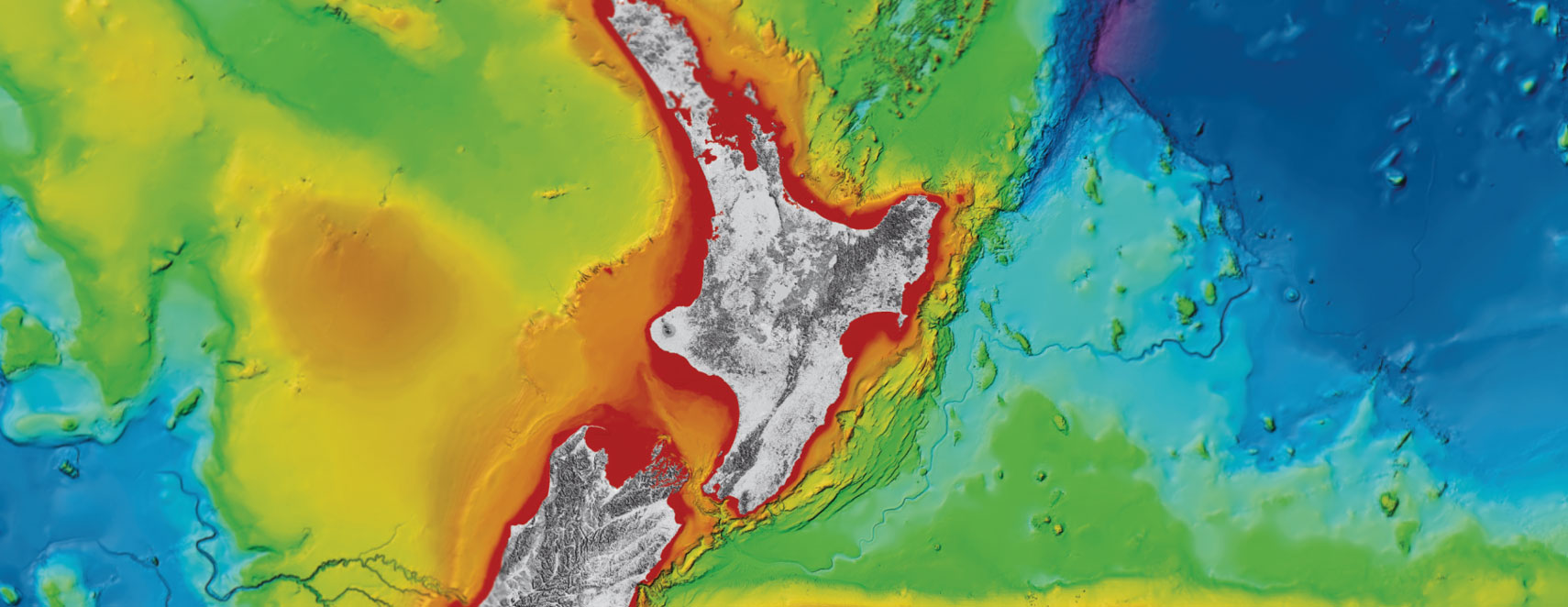
RV Tangaroa Blog – Day 3: Overcoming Obstacles

RV Tangaroa Blog – Day 3: Overcoming Obstacles
Taylor Tracey Kyryliuk
Finally, the weather has improved, and everyone is starting to feel well enough to go on their shifts! A sperm whale was even sighted in the distance during the shift and we also had a beautiful view of the moon as it rose above the horizon in the sky.
At the beginning of the noon-midnight shift on day 3, the Tangaroa was transiting around 2 hours to the farthest away drop point. Typically, it takes between 1-2 hours to sail the Tangaroa from one OBS deployment location to the next.
The spacing of the instruments is decided by two factors. The first is ensuring the region we want to investigate is covered by the 20 instruments we have available. The second is ensuring we have enough resolution on the earthquakes we are recording. The closer together the stations are, the better resolution we have on their locations, and the clearer the picture of the subduction zone we can build. Our final network spacing is usually a compromise between those two factors.
At the first deployment location of the noon-midnight shift this day, the instrument techs discovered damage to the cabling of the device (called a dunker) that communicates with the OBS in the water. We are not sure what the cause of the damage was, but thankfully the instrument techs were able to repair it as it was the only one we have on board!
The Aquarius Ocean-Bottom Seismometer (OBS)is able to descend all the way to the ocean floor because it has a ballast of steel plates on the bottom. When we return a year from now to recover the OBS, we will need to tell the OBS to resurface. The dunker is used to send a special signal to the OBS. When it receives the signal, the OBS will trigger a burn wire that secures the ballast plates. Once this wire breaks, the ballast plates are released and the OBS will resurface. 
During one of the deployments, we lost communication with an OBS while trying to do the triangulation technique to pinpoint its location on the sea floor. We think the instrument might have landed on a slope, or against a rock or depression on the seafloor, which is blocking the signal from some directions. Fortunately, we can still communicate with it, so we know it is still working. The Aquarius OBS has a timer to trigger the burn wire so that it will resurface. If we lose communication, the OBS still has the ability to resurface. Normally that timer is set to a year post deployment.
As of day 3, we are over half-way through deployment and making great progress!
20 December 2023
Disclaimers and Copyright
While every endeavour has been taken by the East Coast Lab Hikurangi Subduction Zone M9 to ensure that the information on this website is
accurate and up to date, East Coast Lab Hikurangi Subduction Zone M9 shall not be liable for any loss suffered through the use, directly or indirectly, of information on this website. Information contained has been assembled in good faith.
Some of the information available in this site is from the New Zealand Public domain and supplied by relevant
government agencies. East Coast Lab Hikurangi Subduction Zone M9 cannot accept any liability for its accuracy or content.
Portions of the information and material on this site, including data, pages, documents, online
graphics and images are protected by copyright, unless specifically notified to the contrary. Externally sourced
information or material is copyright to the respective provider.
© East Coast Lab Hikurangi Subduction Zone M9 - www.eastcoastlab.org.nz / +64 6 835 9200 / info@eastcoastlab.org.nz
